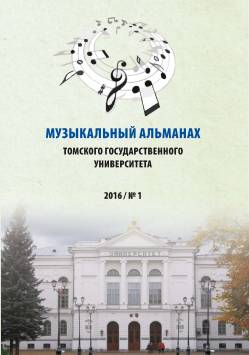Oratorial performing in Tomsk and V. Sotnikov's activity (1939-2020)
The article is about activity of an artistic director of the Folk Chapel of Tomsk State University, Professor Vitaly Sotnikov, and his contribution in performing an oratorical music in Tomsk. Also it is about origin and development of performing of vocal music of large forms in Tomsk: vocal symphonies, cantatas, oratorios. The facts are given that even at the turn of the XIX-XX centuries, Tomsk musicians performed fragments and full versions of oratorios by Russian composers Taneyev and A. Rubinstein. V. Sotnikov was an enthusiast and conductor of performing of vocal and instrumental large forms in Tomsk for the last half of century. The programs of oratorio concerts prepared by the choirmaster together with the chapel are considered. The range of conducting attention covered the works of the XVIII-XXI centuries from I. Haydn to E. Vangelis. V. Sotnikov's contribution to the development of oratorical performing in our city has become a significant part of the musical culture of our city.
Keywords
oratorio, cantata, Vitaly Sotnikov, orchestra, ChapelAuthors
| Name | Organization | |
| Vavilov Stanislav | Tomsk Polytechnic University | |
| Tkalenko Yaroslav | Center for Opera Singing G. Vishnevskaya |
References

Oratorial performing in Tomsk and V. Sotnikov's activity (1939-2020) | Musical Almanac of Tomsk State University. 2020. № 10. DOI: 10.17223/26188929/10/6